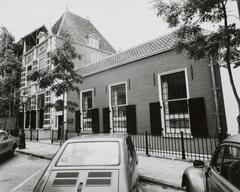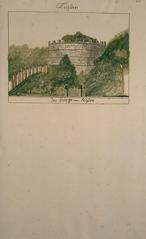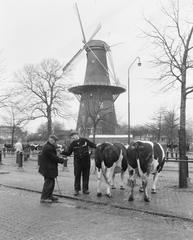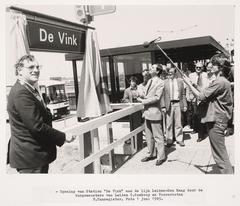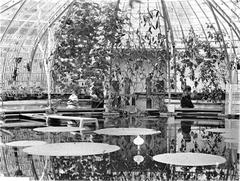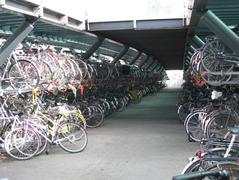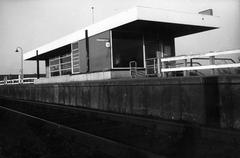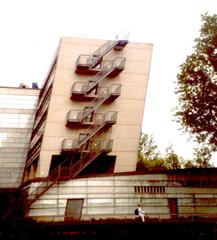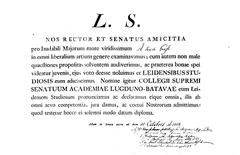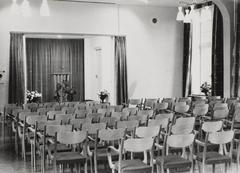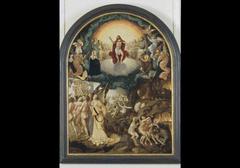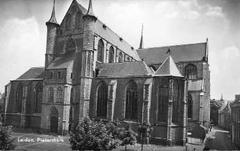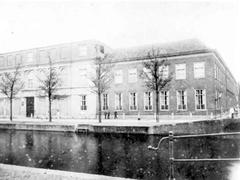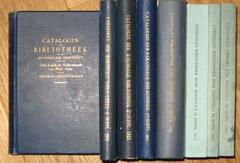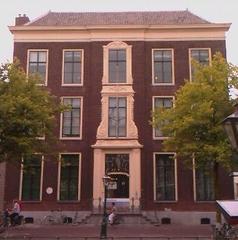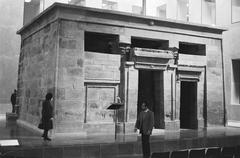
Gravensteen Leiden Visiting Hours, Tickets, and Historical Site Guide
Date: 04/07/2025
Introduction to Gravensteen in Leiden
The Gravensteen, or “Castle of the Counts,” stands in the heart of Leiden as a rare and enduring symbol of the city’s medieval roots. Originally constructed in the late 12th or early 13th century under the counts of Holland, this imposing stone fortress has witnessed centuries of change—from noble residence to courthouse and prison—mirroring the evolution of Leiden’s social and judicial landscape. Today, Gravensteen is recognized as one of Leiden’s oldest surviving monuments and a focal point for heritage preservation and cultural engagement.
This comprehensive guide covers Gravensteen’s historical significance, unique architectural qualities, current visiting hours, ticket information, accessibility, special events, and tips for making the most of your visit. Whether you are a history enthusiast or a curious traveler, you’ll find practical information and inspiration here for exploring one of Leiden’s most compelling sites. For up-to-date details, always consult official Leiden heritage and tourism resources (Geschiedenis van Leiden, Visit Leiden, Sleutelstad).
Table of Contents
- Introduction
- Historical Overview
- Architectural Features and Significance
- Visiting Information
- Nearby Attractions
- Sustainability and Renovation
- Frequently Asked Questions (FAQ)
- Contact & Resources
- Summary
- Sources
Historical Overview
Origins and Early Use
Constructed in the late 12th or early 13th century, Gravensteen served as a fortified residence for the counts of Holland. Its robust square brick tower, dating to the early 1200s, was both a defensive stronghold and a visible symbol of comital power. The fortress was strategically located near Breestraat, the medieval heart of Leiden, and integrated into the Gravenhof estate.
Transition to Judicial and Penal Functions
By the 15th century, Gravensteen’s function shifted from noble residence to courthouse and prison. The structure was adapted with new features such as a hexagonal stair tower (15th century) and a prison wing (16th century). The adjoining Het Gerecht square became the site of public executions, underscoring the building’s central role in the city’s justice system.
Later Uses and Preservation
Following nearly six centuries as a prison, Gravensteen was repurposed in the late 19th and 20th centuries—first as book storage and later for academic purposes by Leiden University. Now a protected national monument, it is undergoing sustainability renovations to ensure its survival for future generations (Geschiedenis van Leiden).
Architectural Features and Significance
Exterior and Materials
Gravensteen is notable for its stone construction—a rarity in Leiden, where brick predominates. The thick, load-bearing stone walls, narrow defensive windows, and austere façade distinguish it from the city’s later, more ornate buildings. Remnants of original medieval features, such as hand-hewn stone blocks and Romanesque arches, are visible on the exterior (Visit Leiden).
Defensive and Interior Features
Designed for defense, Gravensteen’s narrow slit windows served both as observation points and arrow loops. The interior, adapted over centuries for various uses, preserves heavy oak doors, ironwork, vaulted ceilings, and remnants of original cells. These features tell the story of the building’s evolving civic roles—first as a stronghold, then as a place of incarceration.
Integration with the City
Gravensteen’s modest scale and integration with surrounding structures reflect the adaptation of feudal architecture to Leiden’s dense urban fabric. Its proximity to major landmarks like Pieterskerk and the Burcht van Leiden situates it within a layered historic landscape (DutchReview).
Visiting Information
Visiting Hours
- Regular Hours: Gravensteen is not open as a conventional museum and does not have daily public hours. Instead, access is offered during special events (such as Open Monuments Day) or temporary exhibitions.
- Check Ahead: Always consult the municipal website or the Leiden tourism office for the latest updates on openings.
Ticket Information
- Entry: Access during special events is often free, but advance booking may be required due to limited capacity.
- Sales: There are no daily ticket sales; entry is only available during announced events or exhibitions.
Accessibility
- Mobility: Due to its historic architecture, Gravensteen offers limited accessibility. Expect stairs, uneven floors, and narrow passageways.
- Facilities: There are no on-site amenities such as restrooms or cafés, but nearby attractions like Pieterskerk provide accessible facilities.
Guided Tours and Special Events
- Guided Tours: Available only during special occasions, such as city-wide heritage events. Advance registration is recommended.
- Events: Gravensteen participates in events like Leiden’s Open Monuments Day and Open Gardens Weekend, providing rare opportunities to explore its interior with expert guides.
Practical Tips
- Check opening dates and times in advance.
- Wear comfortable shoes due to uneven surfaces.
- Travel by public transport or bicycle, as parking in the city center is limited.
- Respect any safety instructions related to ongoing renovations.
- Photography is encouraged outside; interior rules may vary during events.
Photographic Opportunities
- The exterior, with its needle spire and hexagonal stair tower, is especially photogenic.
- Early morning or late afternoon light enhances the stonework.
- Interior photography rules are event-dependent—ask staff for guidance.
Nearby Attractions
- Pieterskerk: Leiden’s historic church, next door to Gravensteen.
- Leiden Botanical Gardens: The oldest botanical garden in the Netherlands.
- Burcht van Leiden: Medieval fortification with panoramic city views.
- Museum De Lakenhal: Art and history museum highlighting Leiden’s heritage.
Sustainability and Renovation
Leiden’s municipality is actively working to preserve Gravensteen, with phased renovations focused on sustainability and energy efficiency. These efforts may temporarily limit access or alter visitor routes. Stay informed by checking Sleutelstad for updates.
Frequently Asked Questions (FAQ)
Q: Does Gravensteen have regular opening hours?
A: No, access is limited to special events or temporary exhibitions. Always check official updates in advance.
Q: Are tickets required?
A: Entry is typically free during events but may require advance booking; no daily tickets are sold.
Q: Is the site wheelchair accessible?
A: Accessibility is limited due to historic architecture. Visitors with mobility challenges should plan accordingly.
Q: Are guided tours available?
A: Only during city-wide events or special occasions.
Q: Is photography allowed?
A: Exterior photography is welcome; interior rules depend on the event.
Contact & Resources
- Leiden Tourism Office: visitleiden.nl
- Municipal Information: Sleutelstad
- Address: Pieterskerkhof 6, Leiden
Summary
Gravensteen in Leiden is a compelling emblem of medieval architecture, historical resilience, and urban heritage. Its transformation from comital residence to courthouse, prison, and university archive reflects centuries of adaptation. While daily access is limited, special events and guided tours provide opportunities to experience its unique atmosphere. Located near other major Leiden attractions, Gravensteen is an essential stop for those interested in the city’s layered history. For the most current information, consult the official heritage and tourism websites, and consider using the Audiala app for audio guides and interactive maps.
Sources
- Visiting the Gravensteen in Leiden: History, Tickets, and Visitor Information (Geschiedenis van Leiden)
- Exploring Gravensteen in Leiden: Architectural Marvel, Visiting Hours, Tickets & Travel Tips for Historical Sites Enthusiasts (Visit Leiden)
- Gravensteen Visiting Hours, Tickets & Guide to Leiden’s Historic Castle (Sleutelstad)







